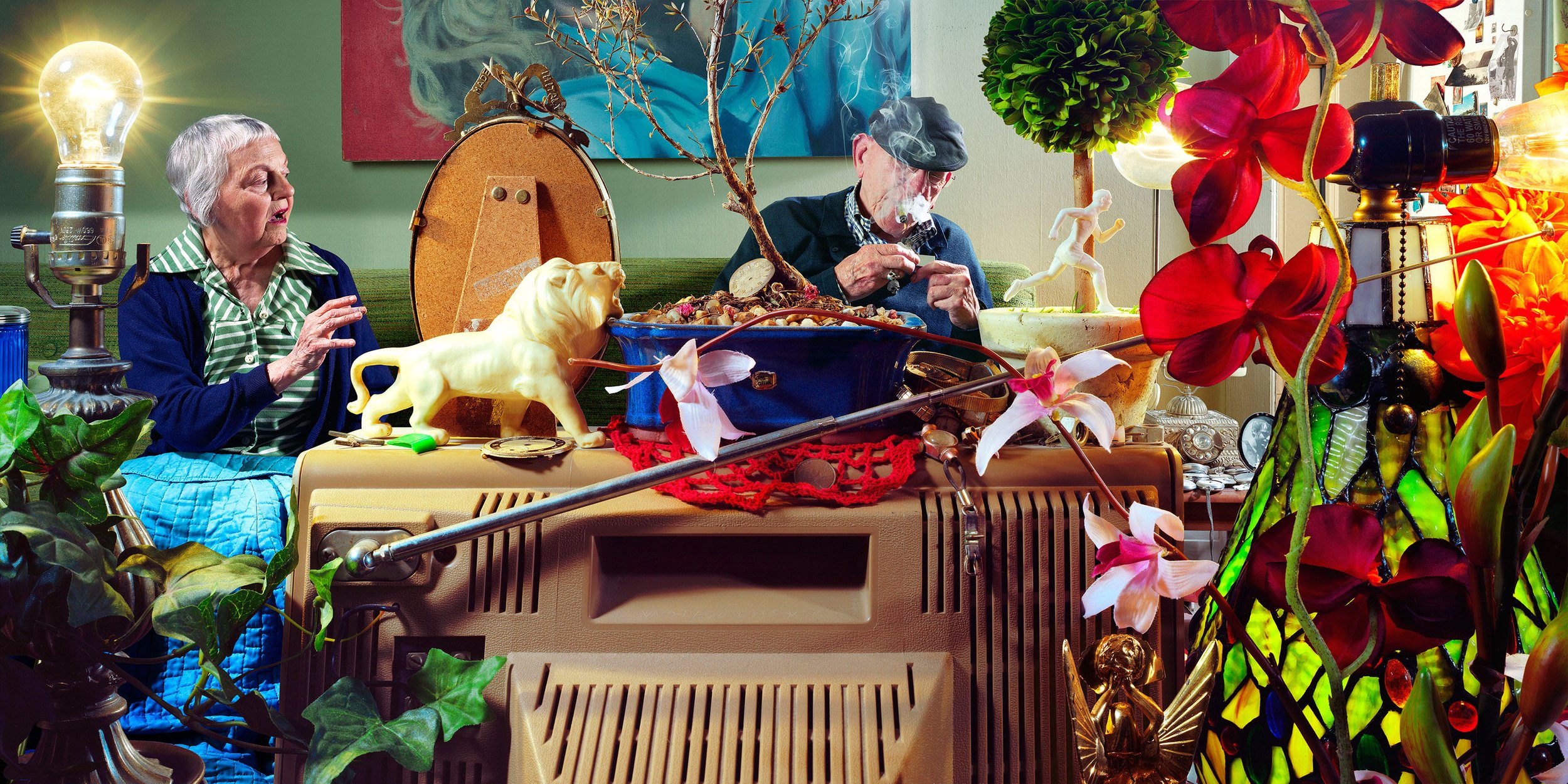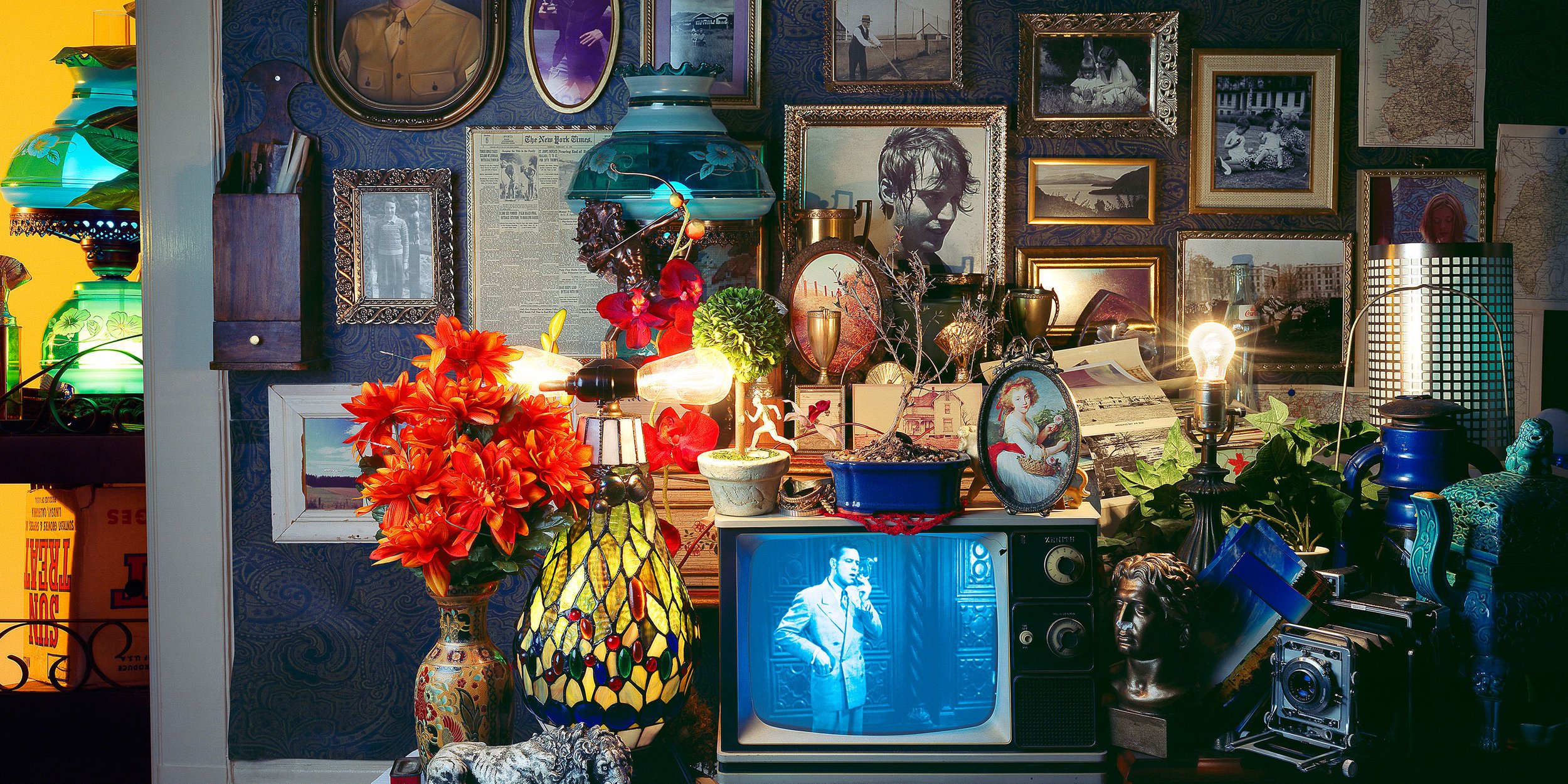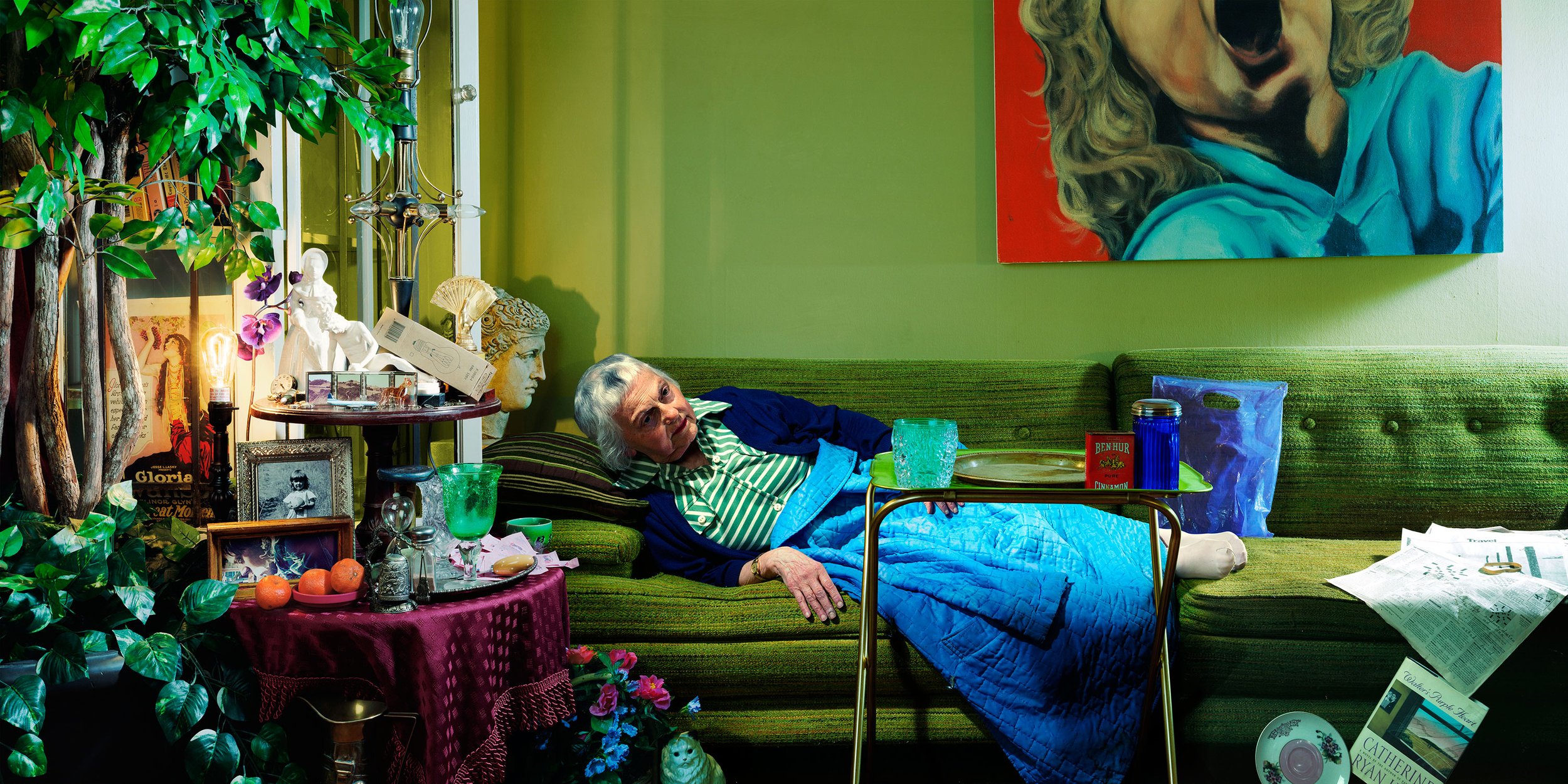“Strange”
You and Me on a Sunny Day #109/135
Berkeley Art Museum & Pacific Film Archive (BAMPFA) Permanent Collection
C-print, 80 x 40 inches [203.2 x 101.6 cm]
Limited edition print of 1/3
You and Me on a Sunny Day
Original score by Benjamin Hill and Tristan de Liège
“The project of 135 large-format still images titled 'You and Me on a Sunny Day' is conceived as a film in the form of a sequence of stills and sound. The works, seen in order, tell the story of an elderly woman recollecting, and at times dreaming about, her deceased husband and his youth as a champion long-distance runner. All of the interior shots were made in the artist’s own San Francisco apartment, which he transformed into a complex mise-en-scène for the unfolding narrative.
To complete his monumental project, Rocky spent every Sunday for five years photographing his downstairs neighbor with an 8x10-inch camera, Gilda Todar (1927-2017), in the lead role. The astonishing clarity and richness of detail in the prints is the result of a painstaking process of shooting up to twenty-two individual sheets of 8x10-inch film for each final image, using digital technology to create a fantastically seamless montage.”
—Berkeley Art Museum & Pacific Film Archive (BAMPFA)
You and Me on a Sunny Day
135 large-format still images
Original score by Benjamin Hill & Tristan de Liége
C-prints, 80 x 40 inches ea. [203.2 x 101.6 cm]
Limited edition prints of 3
“In ‘You and Me on a Sunny Day,’ Rocky spent years photographing his neighbor in elaborate sets that were simultaneously glamorous and daunting. These explosions of color give a peek into a fabricated life while inferring truths about Rocky’s subject.”
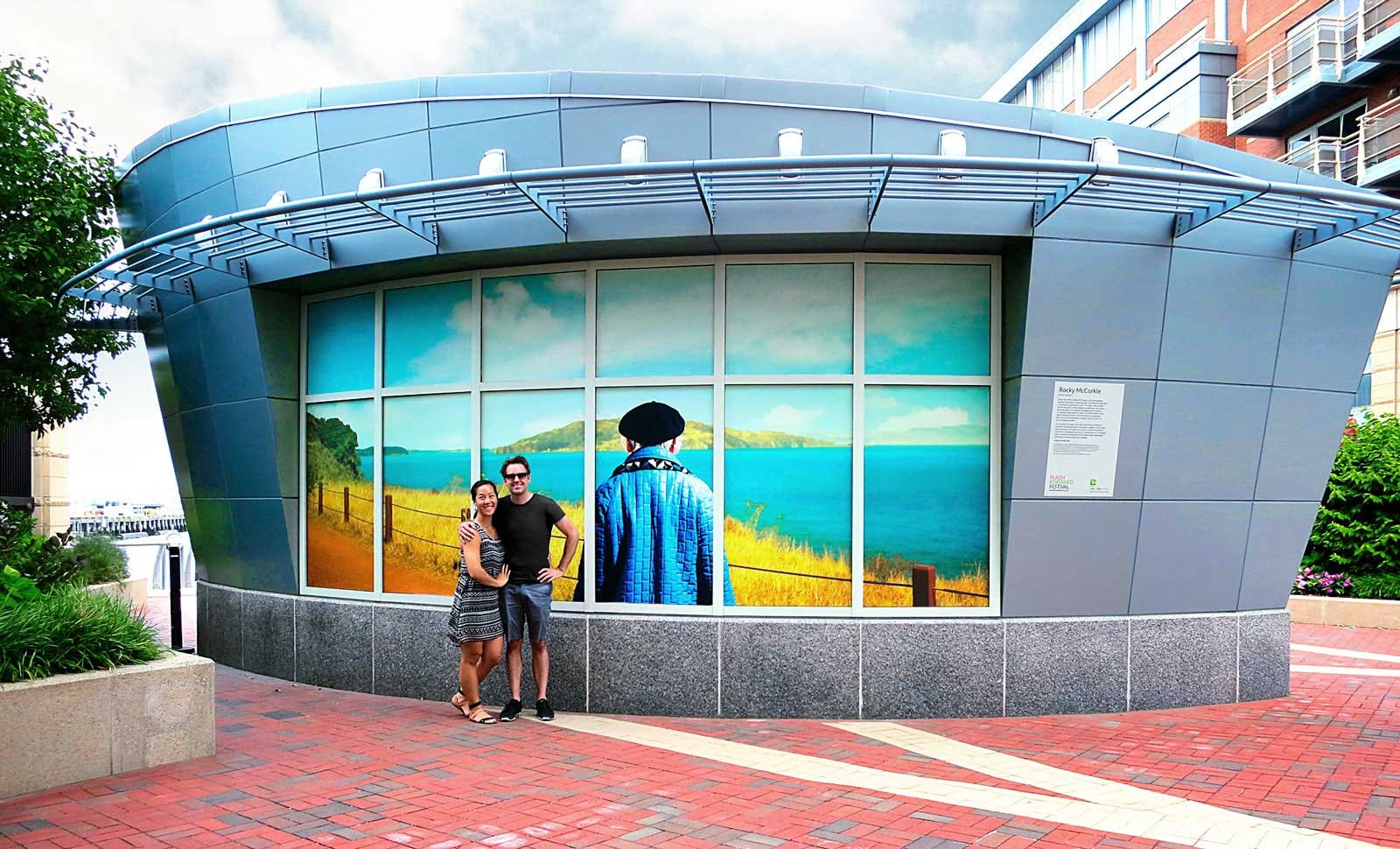
Art Installation, Magenta Foundation, Boston
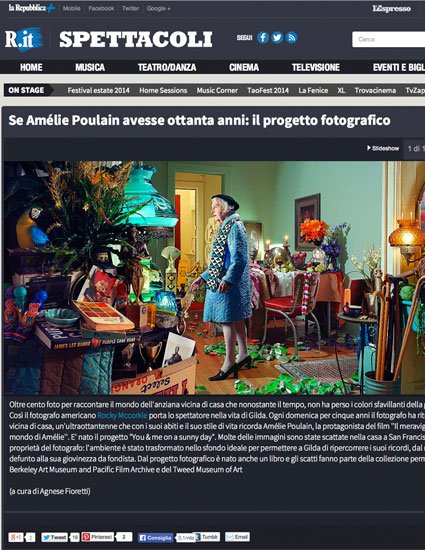
La Repubblica Newpaper, Italy

Photo World China Magazine, Cover and Feature Story, "Rocky McCorkle, In Search of Memory"
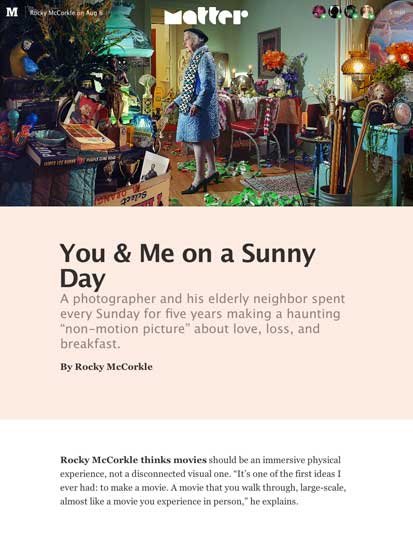
You and Me on a Sunny Day by Erich Nadler, Matter Magazine
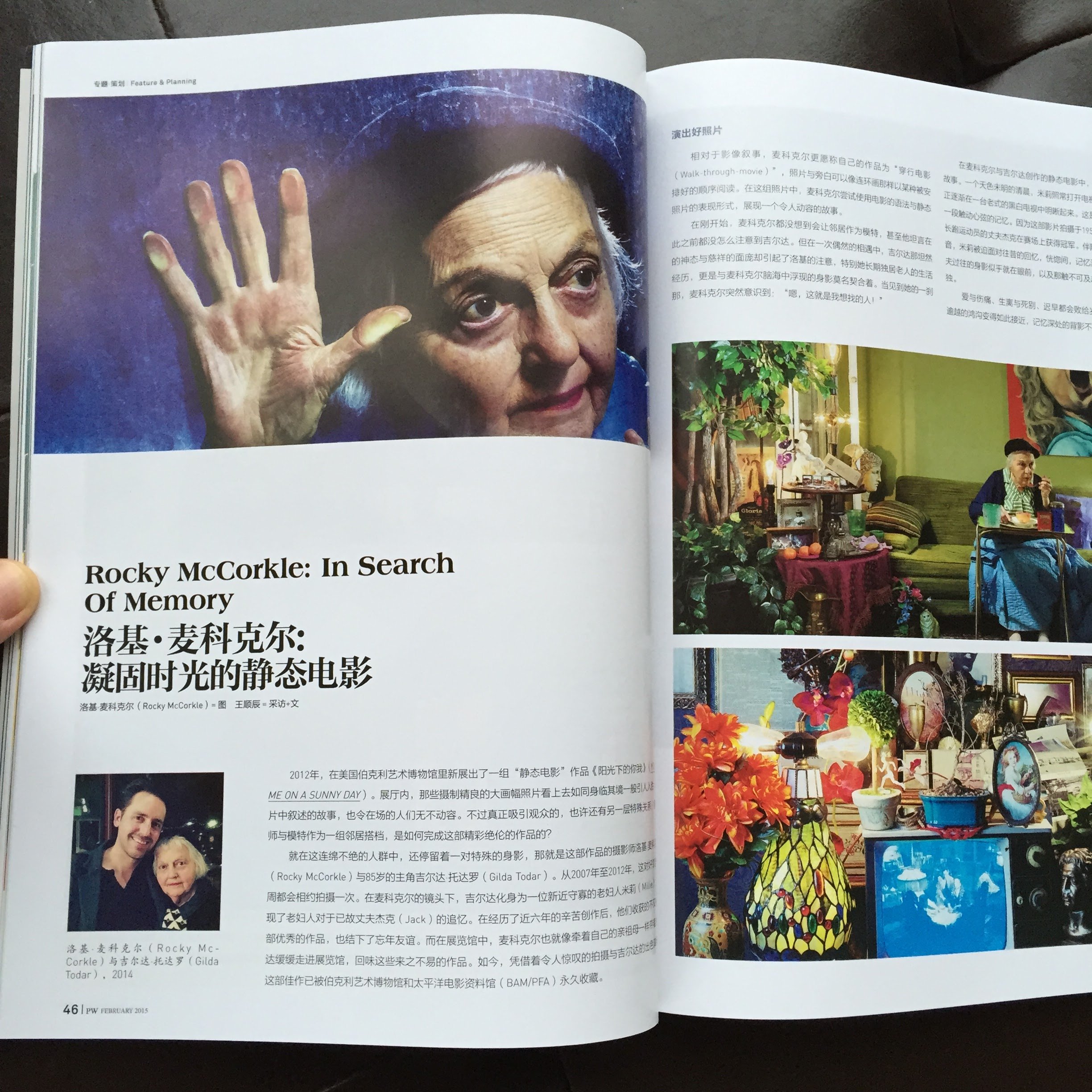
Photo World China Magazine, Cover and Feature Story, "Rocky McCorkle, In Search of Memory"
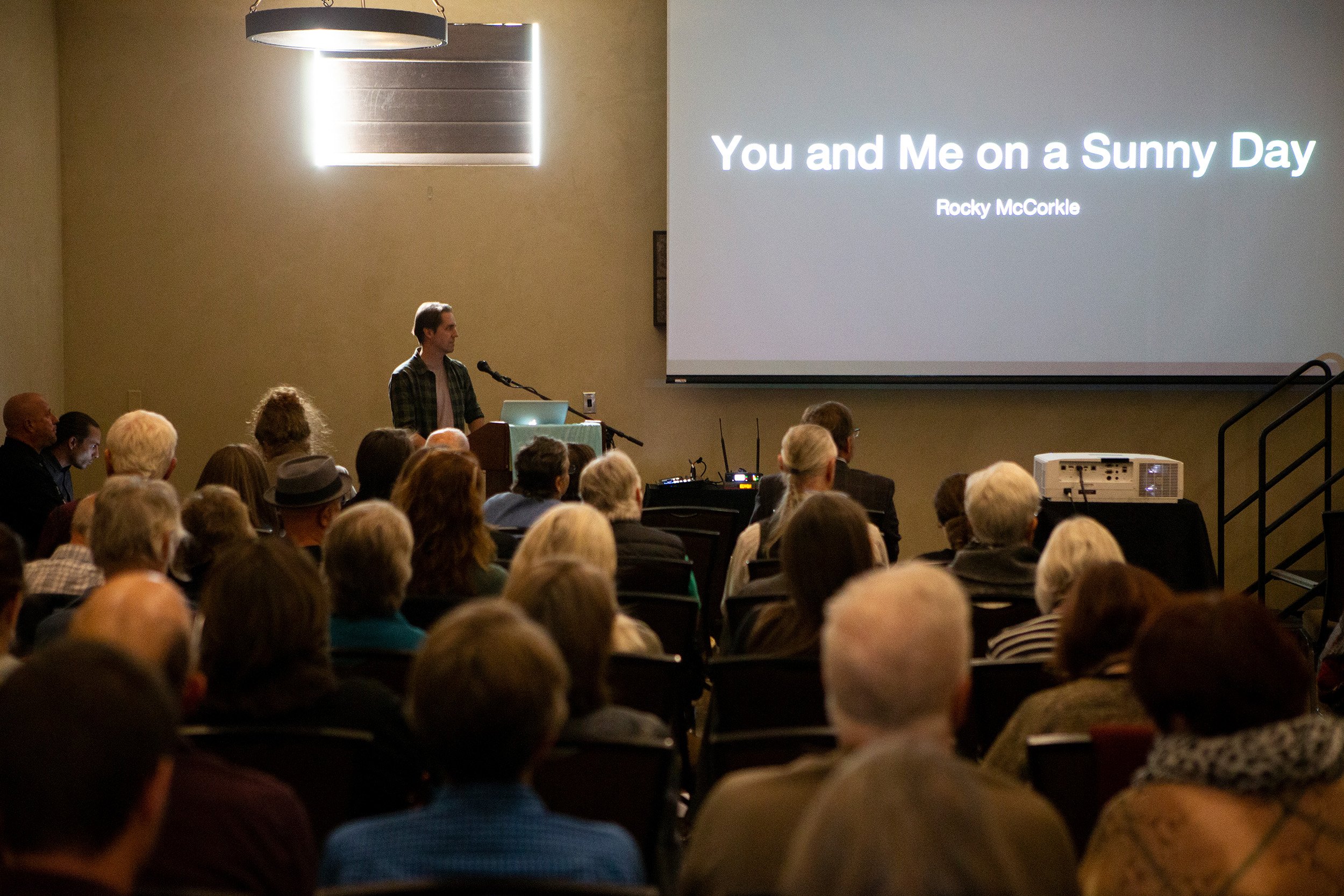
CENTER Awards - Excellence in Multimedia, 1st Place Winner, 2019

PDN
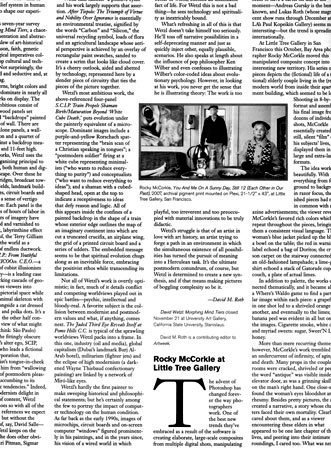
Artweek Magazine
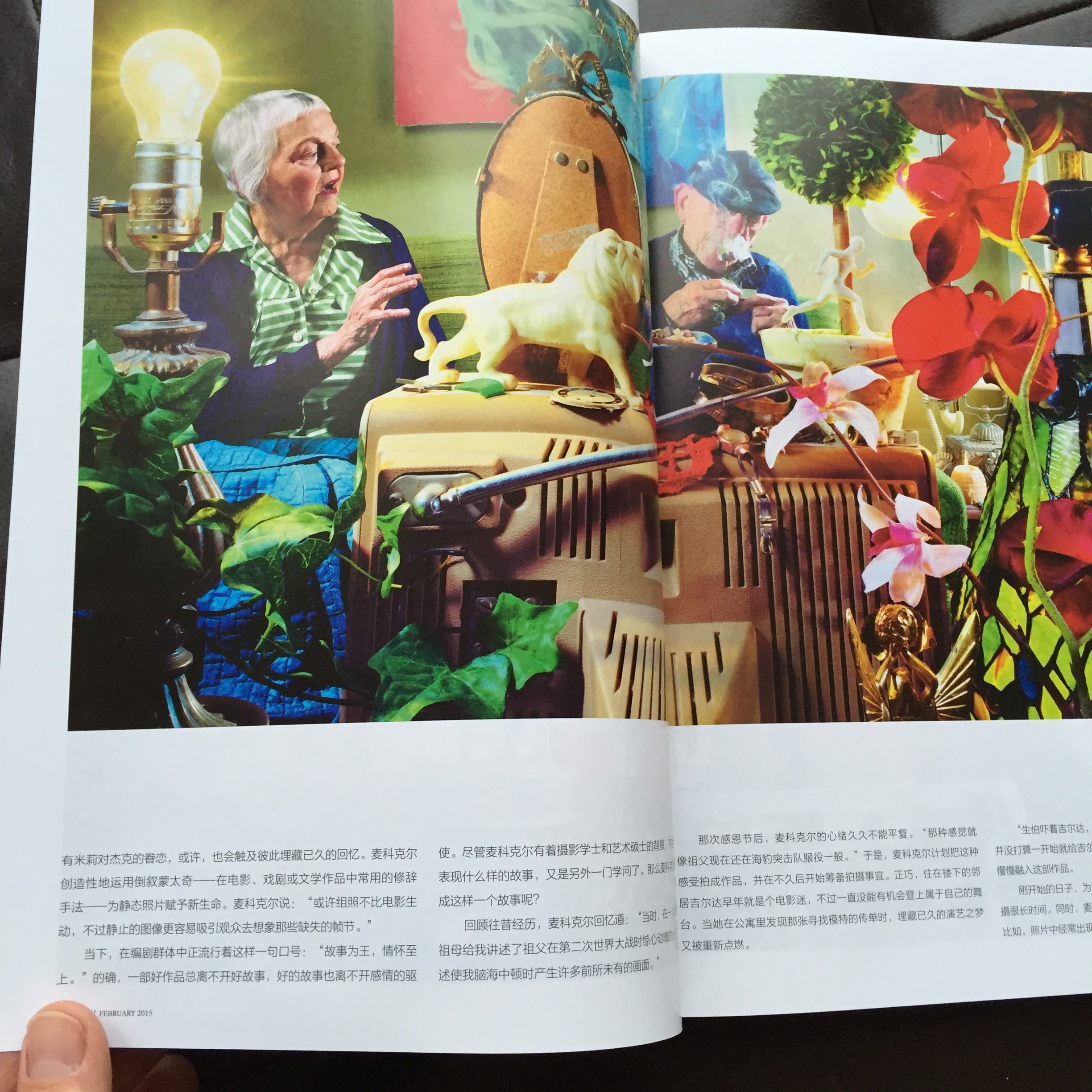
Photo World China Magazine, Cover and Feature Story, "Rocky McCorkle, In Search of Memory"
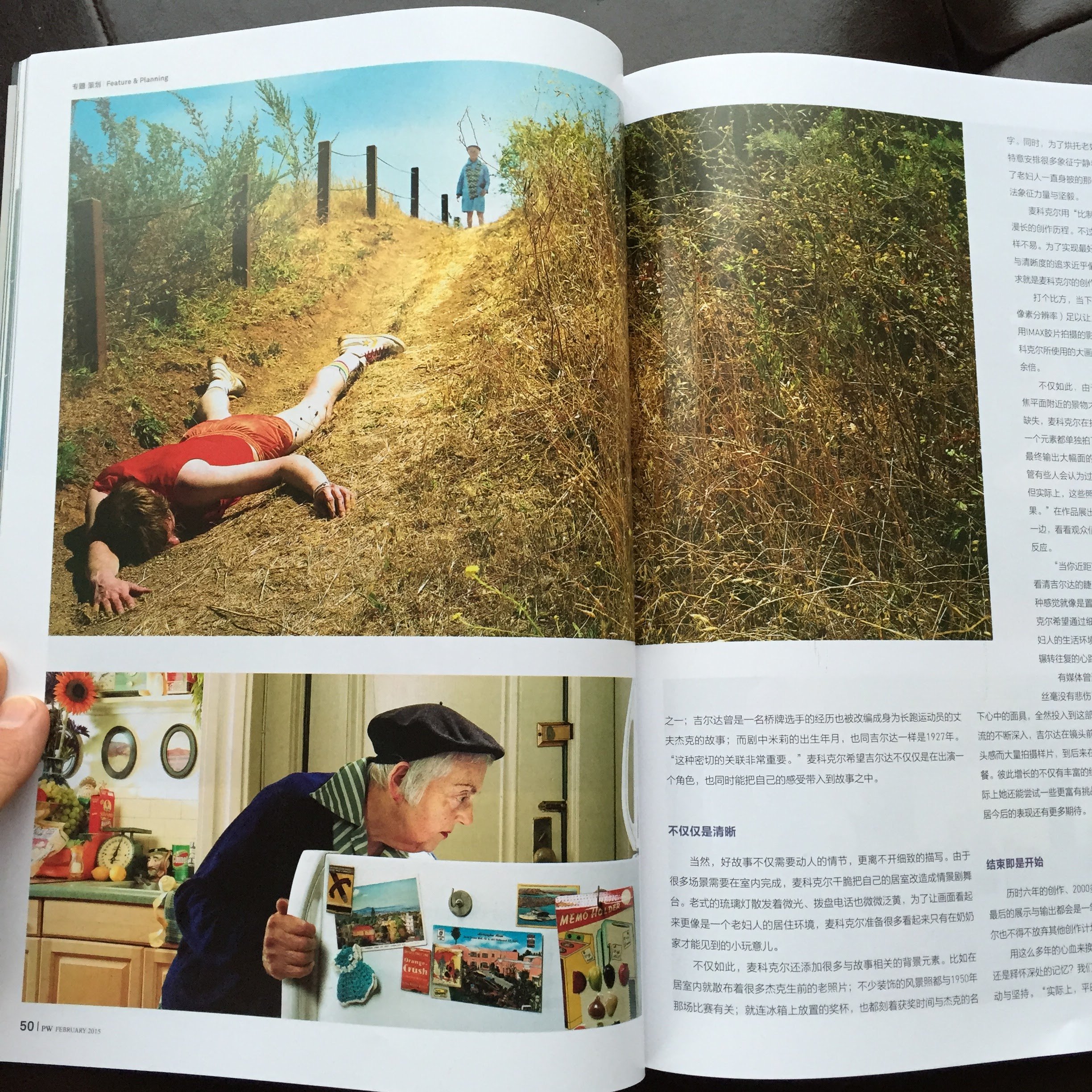
Photo World China Magazine, Cover and Feature Story, "Rocky McCorkle, In Search of Memory"
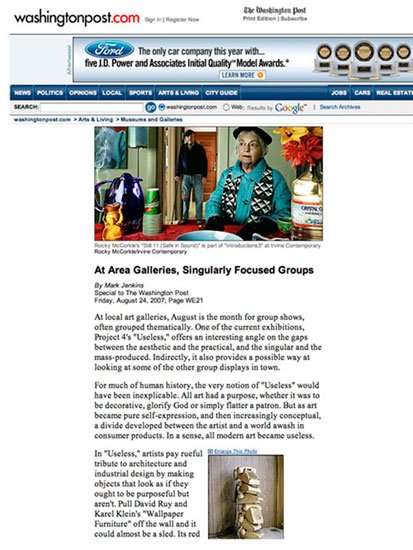
The Washington Post
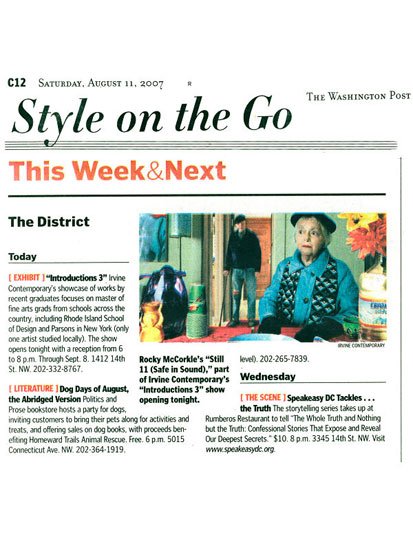
The Washington Post
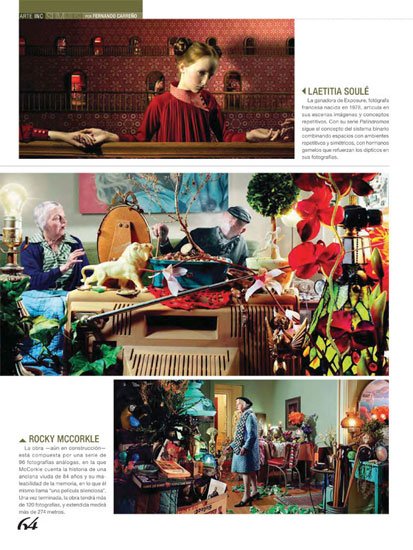
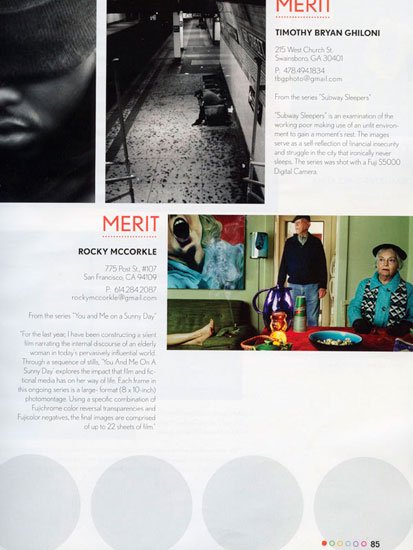
PDN Magazine
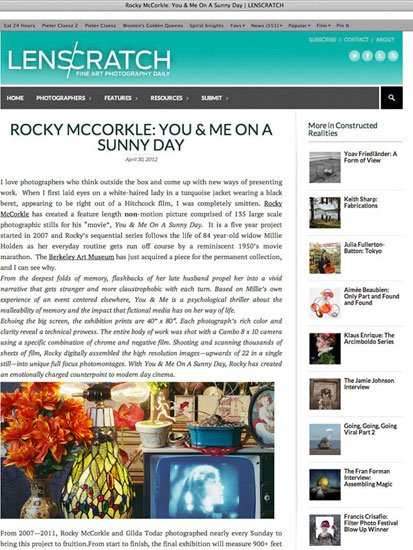
Lenscratch
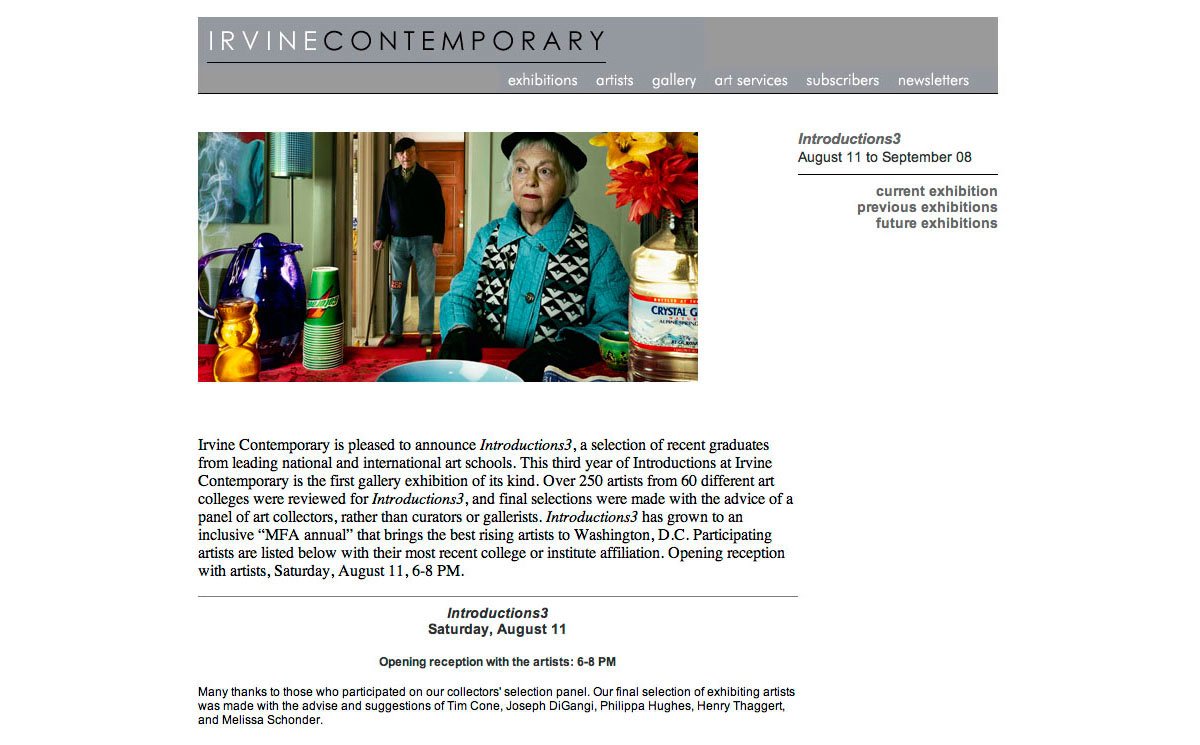
Irvine Contemporary

La Repubblica Newpaper, Italy
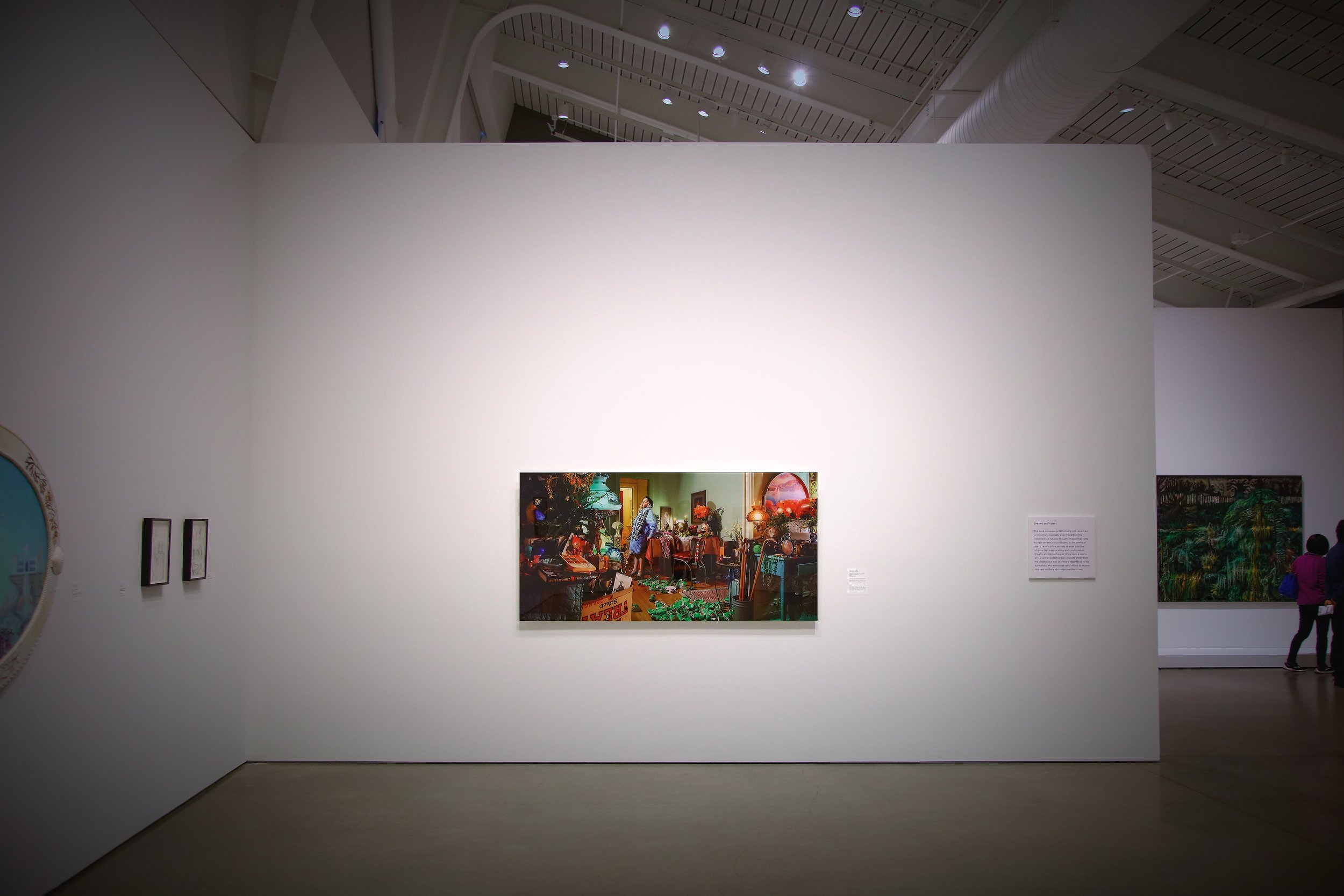
"Strange", Berkeley Art Museum (BAMPFA), 2019-2020
Photographer Rocky McCorkle's Cinematic Study of Former Neighbor
The San Francisco Chronicle, Sam Whiting
Rocky McCorkle’s apartment is decorated in images that are larger than life — the life of his former downstairs neighbor Gilda Todar, to be exact. Every Sunday evening for five years, McCorkle, 36, brought Todar, 87, up for a photo shoot on a set that he had spent all week decorating as if it were the 1950s. It took half an hour to make one image, and the next week they did it all over again — a process slower than clay animation.
By the time the project was finished, these upstairs-downstairs strangers had a rapport that brings to mind “Harold and Maude,” and McCorkle had 135 huge prints that he could hang on a wall end to end to tell a story, starring Todar.
Called “You and Me on a Sunny Day,” the as-of-yet-displayed exhibition “is a walk-through movie in a museum,” says McCorkle, who has a master’s in fine arts from the San Francisco Art Institute and a job as a commercial photographer for a women’s apparel catalog. That pays for his noncommercial work, which cost $15 in film every time he clicked an image of Todar on his large-format camera.
“The story is about an old lady whose husband passed away a few years ago, and she’s thinking about him as she goes through her daily life,” he says. “I don’t know where it came from. It was just subconscious about seeing what my grandma went through.”
The stills were shot in the Warrington Apartments in the Tenderloin, where McCorkle was living at the time. He hung a flyer in the lobby stating that he was “looking for an older model for a long-term project,” and paying $20 for a half hour’s work, once a week. Eight people responded, and he did a screen test on each one.
“I was so happy he was looking for an old woman. That’s how I was able to get the part,” says Todar, a retired city worker who is single and has lived on the ground floor at the Warrington since 1981. She had not acted since a grammar school play in San Mateo, so there was a lot of pent-up performance waiting to get out.
Her costume came from her own clothes. McCorkle would come pick them out before each shoot. “I used to psyche myself up before I went up there,” Todar says. “I felt like I was in the movies, in a way.” Each shot required her to strike a pose and hold it perfectly still for half a minute or more to get the exposure.
“That was sort of taxing,” she says, in a voice that sounds scratchy from the loss of a vocal cord.
As time went on, Todar revealed to McCorkle that when she was growing up in San Mateo, she’d acted in school plays and thought she had a shot at the bright lights attained by a schoolmate, Merv Griffin.
“She’d wanted to be an actress,” McCorkle says. “This was her first starring role. She was sad we were ending. She felt like she was really improving.”
The Berkeley Art Museum bought one of his prints, which are each 3 feet tall and 7 feet long, and displayed it, but it lacks context to look at one shot from “You and Me” among a bunch of other work by other artists.
To exhibit the whole piece would require 1,000 linear feet (the length of three football fields) of wall space, which limits the venues. The Tate in London or the Guggenheim in New York come to mind. Pier 24 Photography on the Embarcadero would be perfect. Read the full article here
Some time ago,
on a black and white morning like any other,
in continuation from yesterday,
which was in continuation from the day before,
to when our morning routine first began.
In recent years, Jack and I moved to San Francisco to be near our daughter.
That’s when there was a we, now it is just me.
I continue the morning routine of eating a cinnamon–covered grapefruit because it has become a ritual nowadays.
The only difference with my morning routine now is that I do it without my other half.
Jack died six days short of his 87th birthday.
My life stopped when he left the picture forever.
The accumulation of postcards, pictures, and stamps hanging around,
make me think of when I was twenty-something and used to photograph everything.
Even as a kid, I was always obsessed with the sun.
Millie's Sun Portraits, Auckland, NZ, 1950
Our apartment became a memorabilia repository,
overflowing with photographs of Jack, our family, and sun portraits.
These pictures help keep his memory alive.
Like a super 8 reel, a random montage of quick cutting scenes rerun through my mind.
Auckland, what a beautiful place.
This is when we were the happiest.
These memories feel as vivid and accurate as snapshots,
but seem to have faded with time as perfectly as color photographs do.
I can remember pictures,
yet I seem to have a photographic memory in a literal sense.
This is my last picture of Jack sporting his favorite hat.
I can now only remember Jack as he was in pictures.
It is as if scenes are missing or damaged, between his zenith, and his heart attack 1,155 days ago.
It must be Billy Wilder picture–day on TV today, a movie marathon if you will.
If I’m busy at the horse track or the bingo parlor or with a little bridge game,
I’ll only think of him three or four times a day.
Every morning while reading the newspaper, Jack used to eat one banana and a small box of raisins.
As soon as he had finished catching up on the previous day’s events, he would place his obsolescent peel on the newspaper.
I can still see those banana threads clinging to the newspaper for dear-life.
I must have been about twenty–nine or thirty years–old when this movie came out.
The plot was about an aging actress fixated on the past.
Sunset Boulevard is my favorite movie of all time.
Her mansion is overflowing with photographs and much too many other odds and ends to describe here.
It is drafty and my mind is drifting.
I fall asleep with the movie still on.
With one light lit, in the first image of my dream, I sit up on the couch.
All of a sudden it is Jack, how I last remember him.
For the briefest of moments, I am in two places at once.
While staring at his trophies, Jack’s sporting life comes rushing back to me.
He started out as an amateur boxer because of his natural toughness.
Jack announced his retirement after the 1948 Olympic marathon in London.
But, I bullied him back into training, I said, “Keep doing your roadwork.”
And Jack’s day in the sun eventually came when he won the 1950 Empire Games.
I am here in Auckland in 1950 again.
Jack is getting farther,
further and smaller.
My heart races with anticipation.
In the last image of my dream, Jack falls after a gun shot.
A clank and thud ferociously yank me out of the dream.
The blinding light slowly grows dim and the room is not with Jack anymore.
I collect the strewn-about mess and return the other half of the grapefruit to the refrigerator.
Jack lives on solely in my mind now.
My life is a still life.
The End.






































































